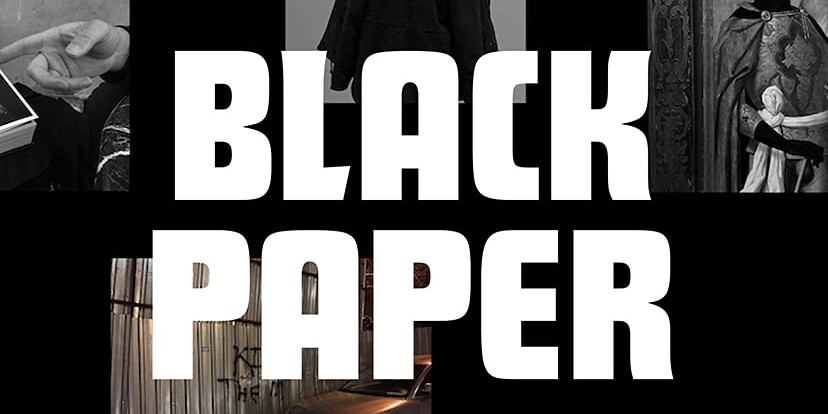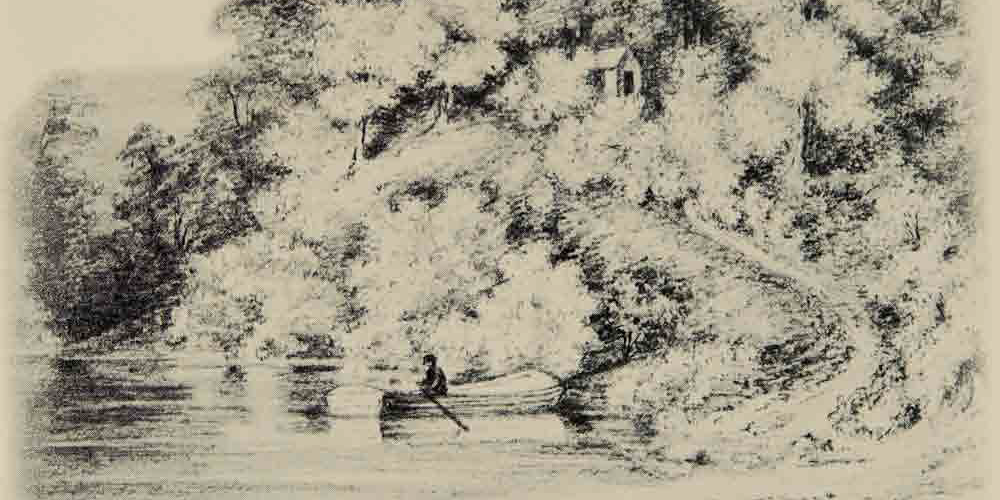IT WAS A HALTING, haunted year. The pandemic sort of ended, but still required constant vigilance, inflicted mass tedium, and ruined our fall plans. Just like autofiction! There were inconclusive congressional inquiries into the Capitol riot and the Bad Art Friend. The Paris Review got a new new editor, which is exciting. Giancarlo DiTrapano died, […]
- print • Dec/Jan/Feb 2022
- excerpt • October 28, 2021
A couple of hours from Beirut, if you’re fortunate with the traffic, you come within touching distance of the Syrian border. A course northward of that brings you through the Beqaa Valley and into Baalbek. We clambered through the palimpsest of ruins in Baalbek—the Assyrian, Roman, Byzantine, and Muslim ruins—and, wary of the proximity to the hot war just a few miles away, wondered if this is how people get kidnapped. That evening, coming back from the ruins, we thought we’d stop in Broummana, and see Edward Said’s grave.
- excerpt • October 26, 2021
After reading Walden, I like to rip it up. Not the book itself, but the sentences and passages that Thoreau so painstakingly put together. When I do, I make it a party, or at least a group affair. On various occasions I have convinced a small group of people to choose sentences at random (some short, some Thoreauvianly long) and then to read those sentences aloud, simultaneously, at various different tempos and modulating volumes, while standing in a circle. The result is an aural montage: some words and phrases lost in the river-rush of words, some bobbing to the surface,
- excerpt • October 19, 2021
At the outset of his influential 1952 essay, “The American Action Painters,” Harold Rosenberg announced:
- print • Sept/Oct/Nov 2021
THE PRIMARY PROBLEM with freedom is that it’s impossible for everyone to have at the same time. Even circumscribed freedoms intersect, impose, and oppose, as conflicts about speech, masks, and vaccines remind us daily. “If and when we ascertain that our well-being is linked to the behavior of others, the desire to impugn, control, or change them can be as fruitless as it is intense,” writes Maggie Nelson in On Freedom: Four Songs of Care and Constraint, her attempt to probe the question of “how to forge a fellowship . . . that does not reflexively pit freedom against obligation.”
- excerpt • September 30, 2021
Fiction in the Age of Amazon is the symbolic provision of more—above all, of more various and interesting “life experience” than can be had by any mortal being, let alone one constrained by the demands of work and family. It is a commodification of this experience, shaped to the reader’s limitations and recurring therapeutic needs.
- print • Sept/Oct/Nov 2021
AN AWFUL DISCOURSE now heralds spring. It goes by “no kink at Pride.” Seemingly concocted on 4chan as one of their loosely coordinated Operations, it has been propelled for the past few years beyond the imageboard by earnest young queers and crypto-religious moralists, both keen to prevent the nonconsensual sight of leathermen. In 2020, arguments about parade logistics reached a fever pitch. The fact that, due to the coronavirus, parades were more likely to be canceled that year was no consolation. There was a more abstract problem: the question of sexuality in public life was at stake.
- print • Sept/Oct/Nov 2021
Beverly Peele and Tyra Banks photographed by Arthur Elgort for Vogue, 1993. © Arthur Elgort FELIX KRÄMER, A GENERAL DIRECTOR OF DÜSSELDORF’S MUSEUM KUNSTPALAST, writes in the foreword to Captivate!: Fashion Photography from the ’90s that “galleries, institutions, studios and the people who work in both the public and private spheres are struggling for survival” […]
- print • Sept/Oct/Nov 2021
Alexis Rockman, Jellyfish II, 2016, watercolor and gouache on black paper, 44 x 30″. Courtesy the artist This year’s Intergovernmental Panel on Climate Change (IPCC) report, a survey of more than 14,000 studies, confirms that we are now in the management phase of the climate crisis: it can’t be prevented, only mitigated. What role can […]
- print • Sept/Oct/Nov 2021
WHILE WANDERING AROUND the Jewish Museum’s haunting exhibition “Louise Bourgeois, Freud’s Daughter,” curated by the artist’s former literary archivist Philip Larratt-Smith, I stopped at a melancholy sculpture called Ventouse, 1990, a double-decker hunk of hacked, chipped black marble that resembles a sarcophagus. The coffin is topped by protruding glass cups, their rounded ends lit from within by electric bulbs.
- print • Sept/Oct/Nov 2021
LAST DECEMBER, nestled amid the second and final COVID-19 stimulus package of Donald Trump’s presidency was a strange provision: within 180 days, the Secretary of Defense and the Office of the Director of National Intelligence were to release an unclassified report detailing the agencies’ knowledge about unidentified flying objects. Between the law’s passage and the release of the report, American interest in UFOs—or, as government officials have euphemistically dubbed them, “unidentified aerial phenomena” (UAP)—soared. In May, 60 Minutes ran a segment featuring witnesses, including two Navy pilots, who had observed these mysterious entities. Barack Obama confirmed their existence. The report,
- print • Sept/Oct/Nov 2021
“I’VE NEVER KEPT SHEEP / But it’s as if I did.” How did these two lines of Fernando Pessoa’s poetry irritate a person like me, often considered a novelist, enough to write a multigenre book full of short pieces and images called Pilot Impostor? The short answer is that the couplet collided with a swarm of issues all at once in an airplane above the Atlantic Ocean.
- print • Sept/Oct/Nov 2021
NICO, BORN CHRISTA PÄFFGEN in Cologne, Germany, in October 1938, is one of the most underappreciated musical innovators of the past century. She’s undeniably famous: as the title of a 1995 film reminds us, Nico is an anagram for “icon.” Yet few other artists’ radical and influential body of work is so eclipsed in the public mind by their romantic and professional relationships (Yoko Ono comes to mind). Few of the people who recognize Nico’s name and face know she spent most of her life creating intense, remarkable, inimitable music under her own name. Everyone knows she fucked Lou Reed,
- print • Sept/Oct/Nov 2021
TROLL, SYLLABIST, BANDLEADER, orator, pest, alcoholic, medium, stenographer, record producer, pedant, speed freak, duppy, redeemer, and glorious irritant, Mark E. Smith was, before anything else, a writer. We know this because of the Fall, a rock band he initiated, destroyed, revived, and maintained between 1976 and his death on January 24, 2018. Though it is tempting to imagine Smith taking a different path and becoming the world’s least biddable radio host, he became himself with and through the Fall.
- print • Sept/Oct/Nov 2021
IN 2011, WINFRED REMBERT HAD ACHIEVED a sufficient measure of fame to be invited back to his hometown of Cuthbert, Georgia, to celebrate his success as an artist. Rembert’s artworks were sought out by collectors and hung in various galleries, including the Yale University Art Gallery. Growing up in Cuthbert in the 1950s and ’60s, Rembert was subjected to police harassment and beatings and, on one occasion, nearly lynched. He had been paraded through town in chains before being sent to prison. But now Cuthbert was honoring its native son with Winfred Rembert Day. He was presented with a plaque
- print • Sept/Oct/Nov 2021
HAS THERE EVER BEEN A WRITER more reviled or more admired than D. H. Lawrence? (His full name was David Herbert Lawrence but he had begun using the initials “DHL” or “D. H. Lawrence” as his signature already as an eighteen-year-old.) Almost from the moment he put pen to paper, this mad genius of English literature with intense blue eyes and a flaming red beard raised a ruckus, which he not only thoroughly enjoyed but did his part in fomenting. He wrote with great fluency—3,500 words in a morning was a snap for him—and he would go on to write
- print • Sept/Oct/Nov 2021
Mel D. Cole, New York, NY 5.30.20, 2020. IN DECEMBER 1964, the activist Fannie Lou Hamer stood beside Malcolm X in Harlem during a rally. Hamer described how, while once traveling to a voter-education workshop, she was arrested and beaten with a blackjack. Facing her listeners in Harlem, Hamer spoke of how that experience led […]
- excerpt • August 24, 2021
The lanes of the cemetery were overgrown, lined with slender conifers whose branches were heavy with rain. I had been pushing the bicycle with my head slightly bowed, and when I looked up I realized I was back at the entrance. I had come full circle. I checked the cemetery map again—I had followed the steps exactly—then continued back in the direction I’d come, hoping to find the gravesite from the opposite direction. In no time at all I was lost. The paths were not marked, and there was no one I could ask—the only other person I’d seen, a
- excerpt • August 20, 2021
There is an important distinction between what Nancy Fraser calls “affirmative change” and actual transformational change. The former is perfunctory, form-filling, intended to silence and appease; the latter requires the dissolution of underlying structures and hierarchies for a complete reformulation. Whether it is the National Organization of Women or an organization like Amnesty International USA (AIUSA) or even the Women’s March, all require transformational change. This means reconsidering everything, from the way meetings are organized and conference calls are set up to the way public demonstrations are organized. The go-to for most organizations, sadly, is affirmative change: the installation of
- excerpt • August 18, 2021
Meaning—or narrative—isn’t always what we see, or even look for, in images. In 1868, following the International Exposition in Paris, the Italian novelist and essayist Vittorio Imbriani published “La quinta promotrice,” a collection of his observations and theories on contemporary European art. This included his theory of the macchia, which Teju Cole describes as “the total compositional and coloristic effect of an image in the split second before the eye begins to parse it for meaning.” Approaching a painting, one is most likely to see before anything else its arrangement of colors, shapes, shadows, and space, and only afterward begin



















